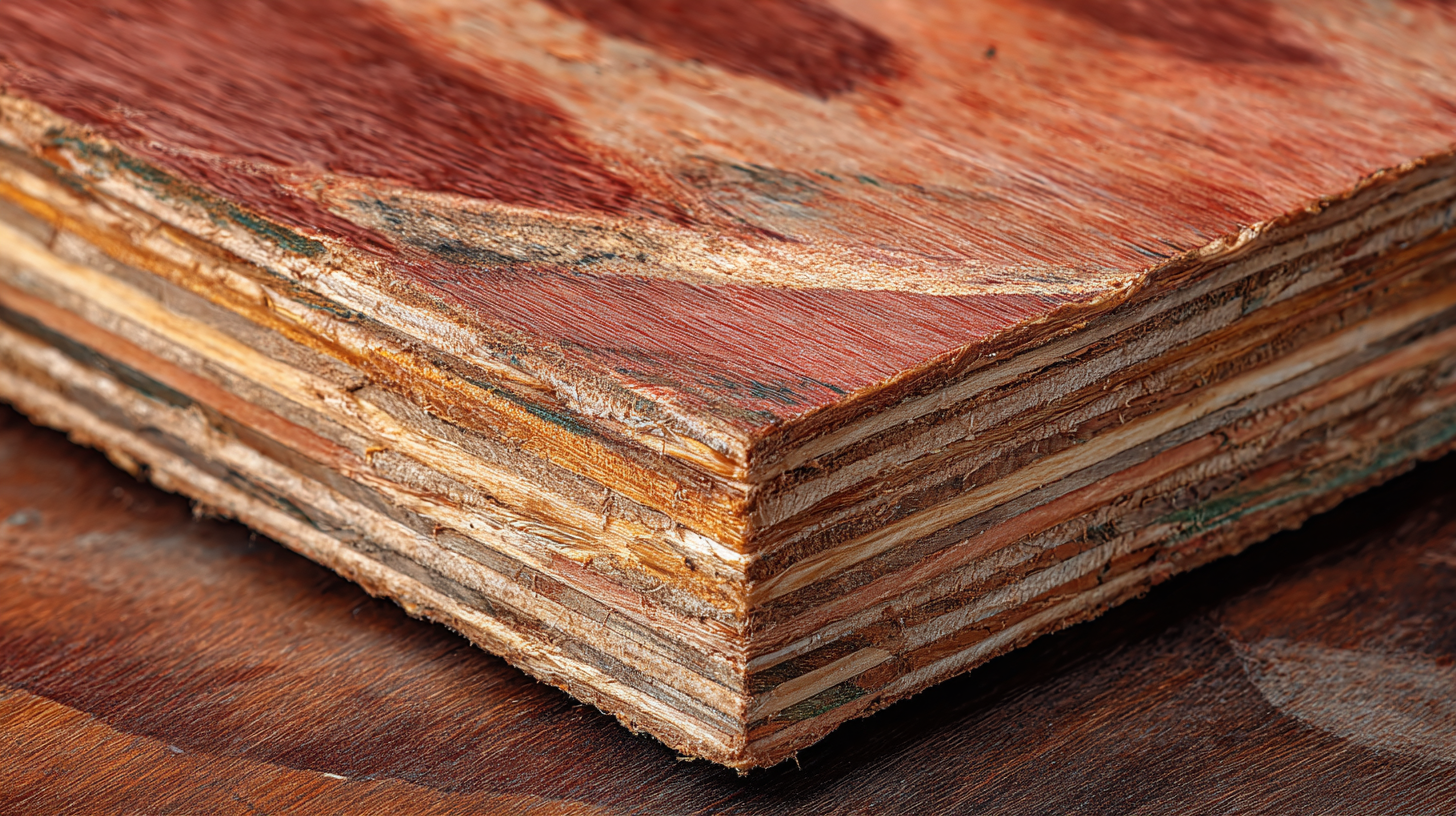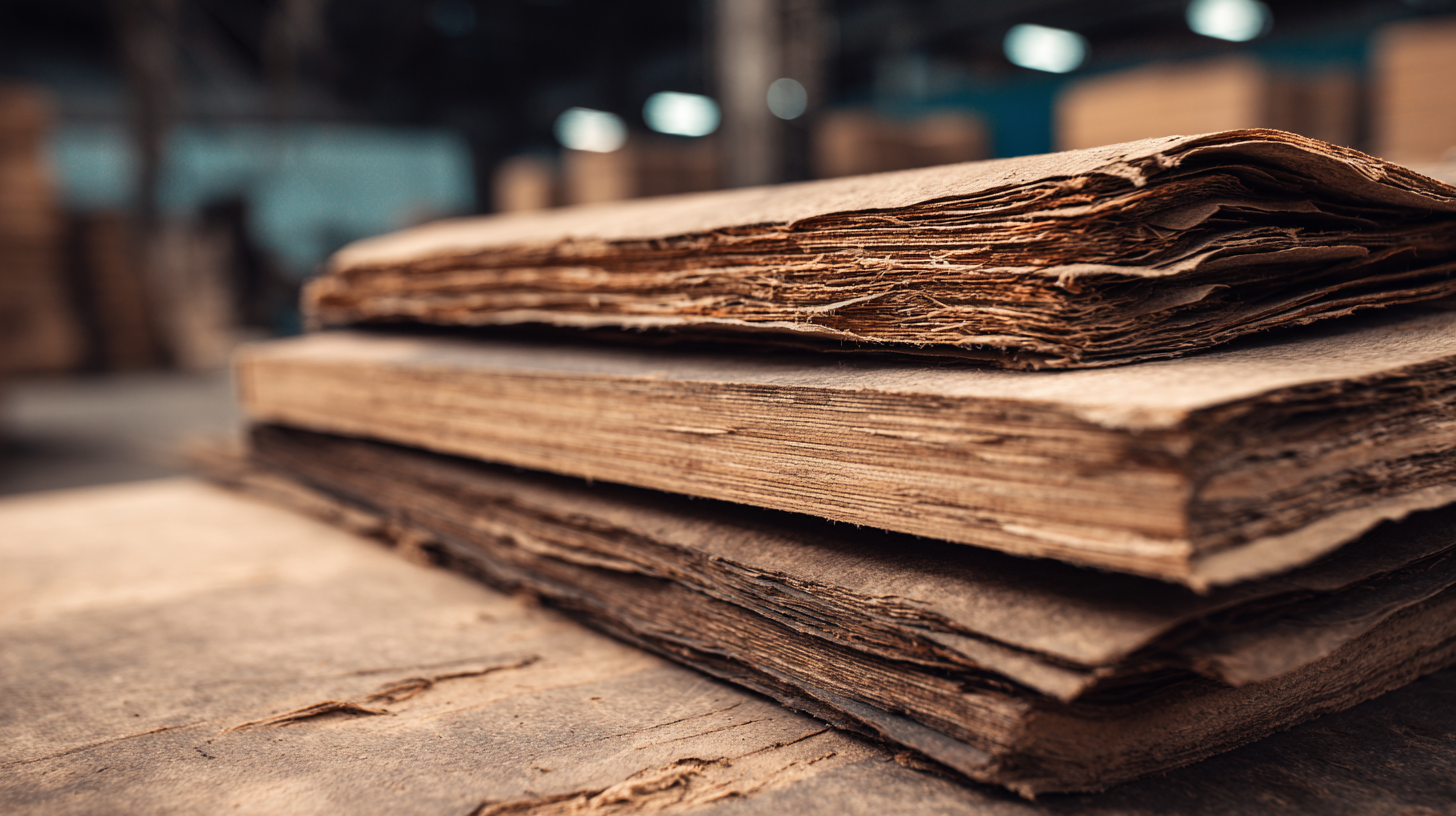In the competitive construction industry, material selection plays a pivotal role in project success, particularly when it comes to durability and cost-effectiveness.
 Film Faced Plywood is rapidly gaining recognition for its beneficial properties, significantly impacting construction projects globally.
According to a recent report by Research and Markets, the global plywood market is projected to reach USD 83.24 billion by 2027, with a considerable share attributed to specialty plywood, including Film Faced Plywood.
This unique material, designed specifically to withstand the rigors of concrete formwork, offers superior moisture resistance, enhanced strength, and a smooth finish that minimizes labor costs.
As construction stakeholders increasingly prioritize sustainability and efficiency, the advantages of Film Faced Plywood can no longer be overlooked.
By exploring these benefits, we can better understand how this innovative material is unlocking success in modern construction endeavors.
Film Faced Plywood is rapidly gaining recognition for its beneficial properties, significantly impacting construction projects globally.
According to a recent report by Research and Markets, the global plywood market is projected to reach USD 83.24 billion by 2027, with a considerable share attributed to specialty plywood, including Film Faced Plywood.
This unique material, designed specifically to withstand the rigors of concrete formwork, offers superior moisture resistance, enhanced strength, and a smooth finish that minimizes labor costs.
As construction stakeholders increasingly prioritize sustainability and efficiency, the advantages of Film Faced Plywood can no longer be overlooked.
By exploring these benefits, we can better understand how this innovative material is unlocking success in modern construction endeavors.
Film faced plywood has become an essential material in modern construction techniques, offering a multitude of benefits that enhance both efficiency and structural integrity. One of the primary advantages is its superior strength and durability. The film layer provides an added level of protection against moisture, chemicals, and physical wear, making it ideal for use in harsh construction environments. This durability ensures that projects can withstand the rigors of time and weather, significantly reducing the need for replacements and repairs.
In addition to its durability, film faced plywood is characterized by its smooth surface, which is crucial for achieving high-quality finishes. This smoothness not only enhances the aesthetic appeal of constructed surfaces but also contributes to easier cleaning and maintenance. Furthermore, the lightweight nature of film faced plywood allows for efficient handling and installation, reducing labor costs and overall project time. By integrating this versatile material into construction practices, builders can unlock a new level of efficiency and effectiveness, ultimately leading to successful project outcomes.
When it comes to cost-effectiveness in construction, film faced plywood emerges as a superior alternative to traditional materials. According to a recent report from the Wood Products Council, using film faced plywood can reduce overall project costs by up to 20% compared to conventional wood or particle board. This significant saving is largely due to its durability and reduced maintenance needs, as film faced plywood is engineered to resist moisture and abrasion, leading to longer service life and lower replacement costs.
Furthermore, a study by the International Organization for Standardization (ISO) indicates that projects utilizing film faced plywood reported fewer delays due to its lighter weight and ease of handling, which can translate into increased efficiency on-site. The time saved can ultimately reduce labor costs significantly. Moreover, the consistent quality and availability of film faced plywood maintain a higher standard of construction reliability, making it a smart investment for builders looking to optimize their budgets without sacrificing quality.
| Material Type | Cost per Square Meter | Lifespan (Years) | Weight (kg/m²) | Water Resistance | Ease of Use |
|---|---|---|---|---|---|
| Film Faced Plywood | $25 | 10-15 | 15 | Excellent | Easy |
| Concrete Forms | $35 | 20-30 | 40 | Good | Difficult |
| OSB Panels | $20 | 5-10 | 10 | Fair | Moderate |
| Steel Forms | $50 | 30+ | 60 | Excellent | Moderate |
When it comes to construction projects, the choice of materials can significantly impact both the durability and longevity of the structure.
 Film faced plywood is emerging as a preferred option due to its excellent resistance to moisture, weathering, and wear. This type of plywood is coated with a protective film, making it ideal for use in conditions where traditional plywood would buckle or warp. Its robust design allows it to withstand the elements, ensuring that your construction projects remain intact and visually appealing over time.
Film faced plywood is emerging as a preferred option due to its excellent resistance to moisture, weathering, and wear. This type of plywood is coated with a protective film, making it ideal for use in conditions where traditional plywood would buckle or warp. Its robust design allows it to withstand the elements, ensuring that your construction projects remain intact and visually appealing over time.
Tips: Always inspect the film faced plywood for any visible damage before installation, as imperfections can affect performance. Additionally, consider using appropriate sealants around the edges to further enhance its resistance to water infiltration, especially in high-moisture environments.
The longevity of film faced plywood not only lies in its material properties but also in its ease of maintenance. With simple cleaning and occasional checks, these panels can maintain their integrity for years. Moreover, their reusable nature allows for cost savings on future projects, as they can be recovered and repurposed. By considering film faced plywood, builders can elevate their projects, knowing they are investing in a material that stands the test of time.
Tips: Store plywood properly to prevent damage from the elements before use, and always follow manufacturer guidelines for optimal results in your construction applications.
Film faced plywood has emerged as a pivotal material in modern construction, particularly due to its sustainability benefits. This engineered wood product is crafted from renewable resources, making it an eco-friendly alternative to traditional building materials. The use of film faced plywood helps reduce the carbon footprint of construction projects, aligning with global efforts to promote sustainability in the industry. Its durable surface resists water and wear, allowing it to be reused multiple times on job sites, which further minimizes waste.
In addition to its reusability, film faced plywood is often made from responsibly sourced timber. Many manufacturers prioritize eco-conscientious practices, ensuring that the wood is harvested from sustainably managed forests. This commitment not only supports biodiversity but also promotes the health of the planet’s ecosystems. Moreover, film faced plywood’s efficient production process, which requires less energy compared to other materials, makes it a favorable choice for builders looking to enhance their environmental credentials while ensuring structural integrity and performance in their projects.
Proper maintenance and handling of film faced plywood are crucial for ensuring its longevity and optimal performance in construction projects. This high-quality material is designed to withstand tough conditions, but without the right care, it can suffer damage that undermines its benefits. One of the key practices is to keep the plywood clean and dry. After use, any concrete residue or debris should be removed promptly, as neglecting this can lead to surface degradation. Additionally, storing the sheets in a dry, shaded area protects them from moisture and UV damage, which can drastically reduce their lifespan.

Moreover, handling film faced plywood with care is essential during transportation and installation. Avoid dropping or dragging the sheets to prevent surface scratches and dents. It’s advisable to use a lifting technique that minimizes stress on the edges and corners. When stacking plywood, ensure that the sheets are level and supported evenly to avoid warping. By integrating these maintenance and handling practices, construction professionals can maximize the performance of film faced plywood, leading to successful project outcomes and reduced replacement costs.
